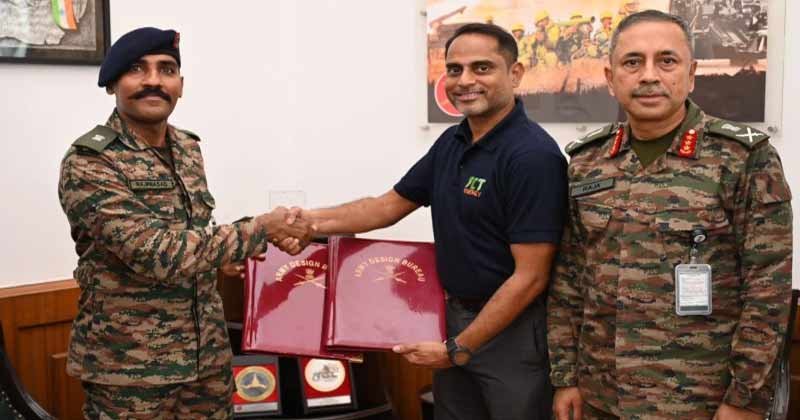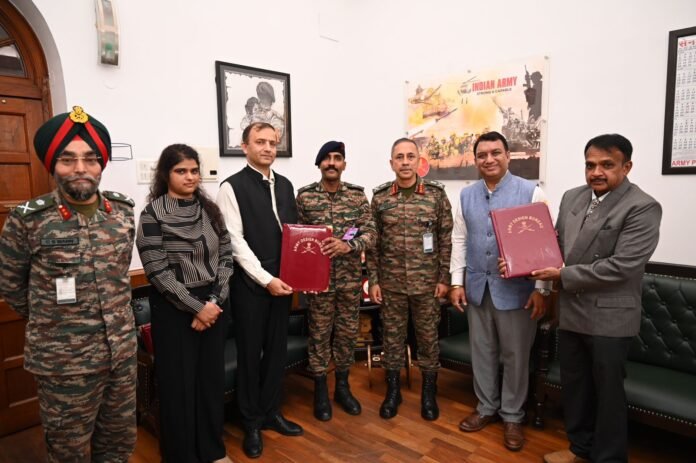New Delhi: The Indian Army has introduced two innovative technologies—Xploder and Agniastra—developed by the Army Design Bureau. In a significant stride toward modernising its military capabilities, the technology of two revolutionary innovation is poised for a pivotal tactical leap and role play by adding more teeth to Indian Army’s counter-terror and counter-insurgency operations.
On August 23, these technologies were transferred for mass production to an unknown private firm, marking a key moment in the Army’s “Year of Tech Absorption” initiative. The Transfer of Technology (ToT) was facilitated by the Foundation of Innovation & Technology Transfer at IIT Delhi, with Vice Chief of Army Staff Lt Gen NS Rajasubramani overseeing the ceremony, highlighting the Army’s commitment to integrating advanced technology into its operational framework.
Developed by Army Design Bureau’s Major Rajprasad, Xploder is a game-changing, state-of-the-art unmanned ground vehicle (UGV) designed to perform a variety of combat and operational roles. With its all-terrain capabilities, Xploder is adept at conducting unmanned reconnaissance missions, delivering explosive payloads, and safely disposing of Improvised Explosive Devices (IEDs). Uniquely, Xploder features a self-destruct mode, which enhances its utility in clearing enemy hideouts. Its application is not limited to combat scenarios; the Xploder is also suitable for disaster relief operations, showcasing its versatility in multiple environments.

The Agniastra is a revolution in remote detonation. Developed by ADB’s Major Rajprasad, the Agniastra is a multi-target portable detonation system that enhances the Army’s ability to conduct remote detonation across multiple targets. This system can be deployed manually or through Unmanned Aerial Vehicles (UAVs) and UGVs, making it adaptable for both conventional warfare and counter-terrorism operations. Agniastra’s capacity to target and destroy multiple locations with precision from extended ranges offers a significant tactical advantage, particularly in complex mission environments.
Expected to transform both conventional and counter-terrorism, these two systems provide an strategic edge when compared to similar technologies in use by other militaries. The Xploder and Agniastra offer distinct advantages enabling precise room intervention, bunker demolitions and large-scale infrastructure destructions. For example, the US military employs the TALON UGV, which performs similar tasks but lacks Xploder’s self-destruct capability and broad applicability across terrains. Likewise, Israel’s Spike FireFly offers remote detonation features, but the Agniastra surpasses it in deployment flexibility and operational range.
Earlier in June 2024, another ADB innovation developed by Major Rajprasad ‘Vidyut Rakshak’ was inducted into the Indian Army. ‘Vidyut Rakshak’ is a IoT-enabled power generator monitoring, protection, and control system. Another innovation developed by ADB – the wireless electronic detonation system (WEDC) is already in-service with the Corps of Engineers.
The introduction of Xploder and Agniastra positions Indian Army as a future ready force and also represents a forward leap in the Indian Army’s technological capabilities, enhancing its readiness and operational effectiveness in modern warfare. These innovations not only solidify India’s defence capabilities but also position the Indian Army as a leader in military technology.
Raksha Anirveda's editorial desk team brings in the collective experience of creative professionals - a fine mix of senior copy editors, writers, proofreaders and designers. Working as a team, they continuously create, manage, and curate content to sustain the magazine's profile and reputation in line with market trends and achieve magazine's goal.





